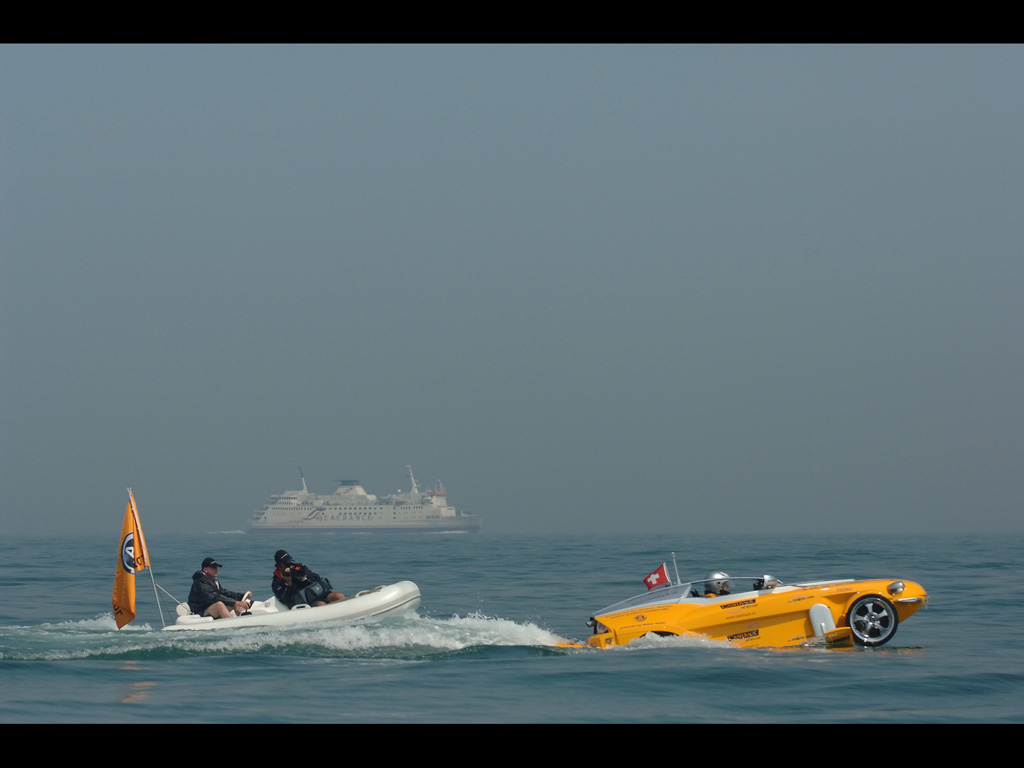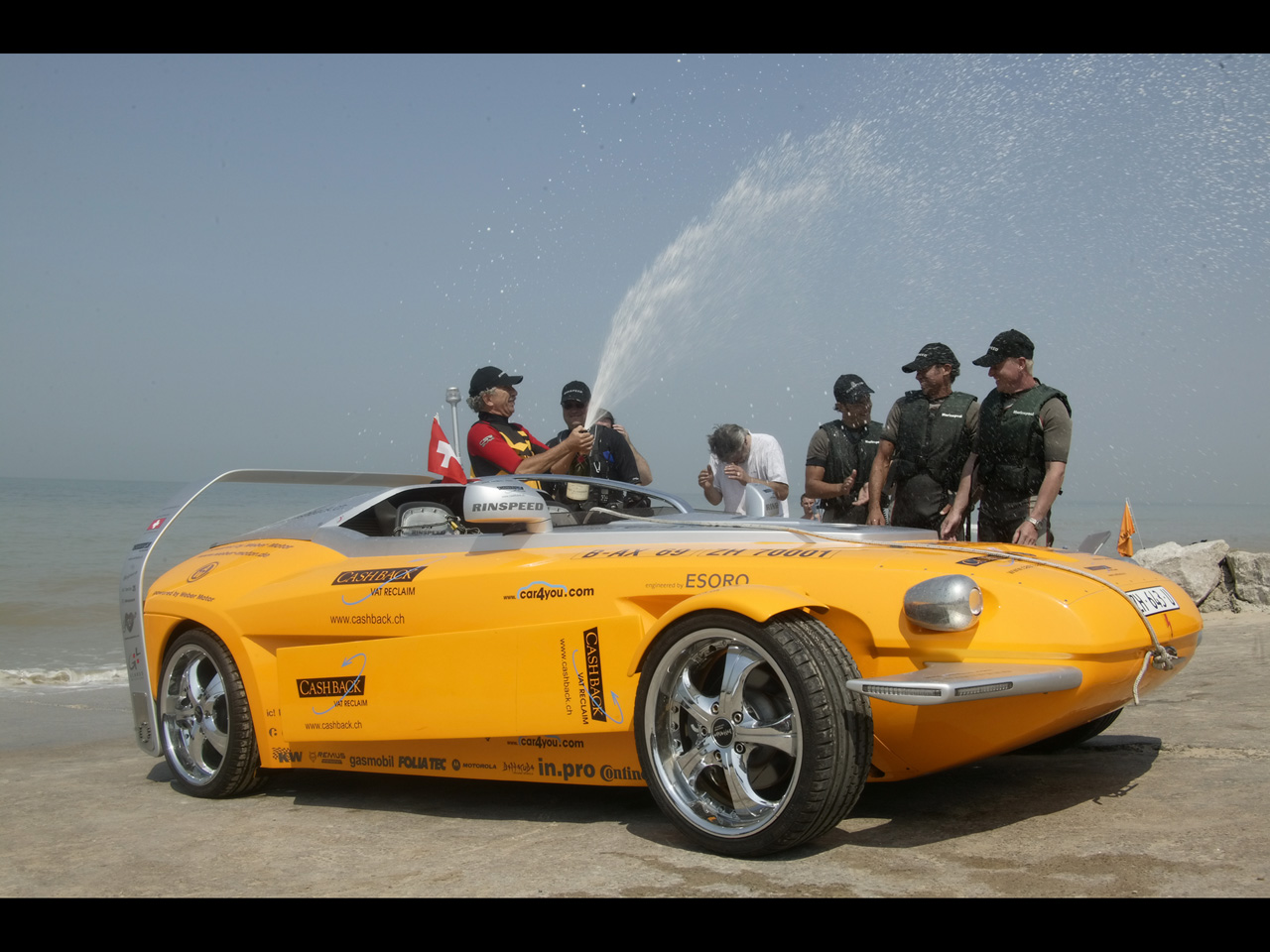2006 Rinspeed Splash Challenge
|
Price |
-- |
Production |
-- | ||
|
Engine |
750 cc 2-cyl Weber Motor |
Weight |
-- | ||
|
Aspiration |
-- |
Torque |
110.6 lb-ft @ 3500 rpm | ||
|
HP |
140 hp @ 7000 rpm |
HP/Weight |
-- | ||
|
HP/Liter |
186.7 hp per liter |
1/4 mile |
-- | ||
|
0-62 mph |
-- |
Top Speed |
-- |
(from Rinspeed Press
Release) The cross-channel trip that took place on July
26th, 2006 from the British port of Dover to the French town of
Sangatte was certainly an adventure. It was also the fastest ever
crossing of the world's busiest waterway by hydrofoil car. In the
time of 193 min 47 sec, pilot Frank M. Rinderknecht, boss of the
Swiss design company Rinspeed set a new world record. “It was like a
giant slalom on an alpine mogul piste. The only difference was that
it was not flexible poles we had to get round but enormous tankers
and container vessels,” said Rinderknecht, thrilled at getting into
the Guinness Book of Records. A hard hit of a big wave in the first
third of the journey caused a yet unknown defect which considerably
slowed down the top speed fort he rest of the passage. But to give
up was not an option, the cross and get to France was the determined
goal”.
The world record was broken in the Rinspeed “Splash” - a completely
new concept in amphibious vehicles which had already caused a
sensation at the Geneva Motor Show in 2004. Whereas "normal"
amphibious cars displace the water like a boat and therefore bear
some resemblance to a bathtub, the “Splash” skims over the water on
extendable wings like a hydrofoil. Rinderknecht: “We crossed the
busiest waterway in the world as if on a surfboard.”
Thanks to the generous support of Cash Back, the specialist for the
simple recovery of foreign VAT on travel or show related expenses,
foreign supplier bills and inter company expenses the ambitious
project was prepared over a period of almost two years.
It took a great deal of effort to convert the original “Splash” into
the present offshore version, so Rinspeed took on board the Swiss
engineering specialists, Esoro, and one of the world's biggest
plastics producers, Bayer MaterialScience. With their extensive
materials know-how, the experts helped Rinspeed get the “Splash” fit
for the high seas. The main design modification involved the wings,
which had to be reinforced. To guarantee dimensional stability, the
molds were cut from molded polyurethane foam.
The successful record ride over the waves was a tough ordeal not
only for the pilot but also for the material. The 140 bhp, 750 ccm
Weber Motor engine can take the “Splash” up to 80 kph, and at that
speed even small waves feel as hard as rock. To supply enough power
for the maiden voyage, WeberMotor supplied a brand-new version of
its lightweight, low-consumption, environmentally friendly
two-cylinder engine. This extremely compact power package produces
140 bhp/103 kW at 7000 rpm, and generates maximum torque of 150 Nm
at just 3’500 rpm.
In theory, the 36 km or so between Dover and Sangatte would have
taken just under half an hour but, says Rinderknecht, “I may be able
to drive at that speed at home in Switzerland on Lake Zurich with no
wind and the surface as smooth as glass, but not on one of the most
difficult stretches of water in the world. But safety was always the
prime concern.”
With his arrival at the French town of Sangatte, he captured his
entry in the Guinness Book of Records. Frank M. Rinderknecht was
overjoyed: “We Swiss are not just good at making the tastiest
chocolate; we can also build the fastest hydrofoil vehicle in the
world – even though we’re not exactly a seafaring nation …”



